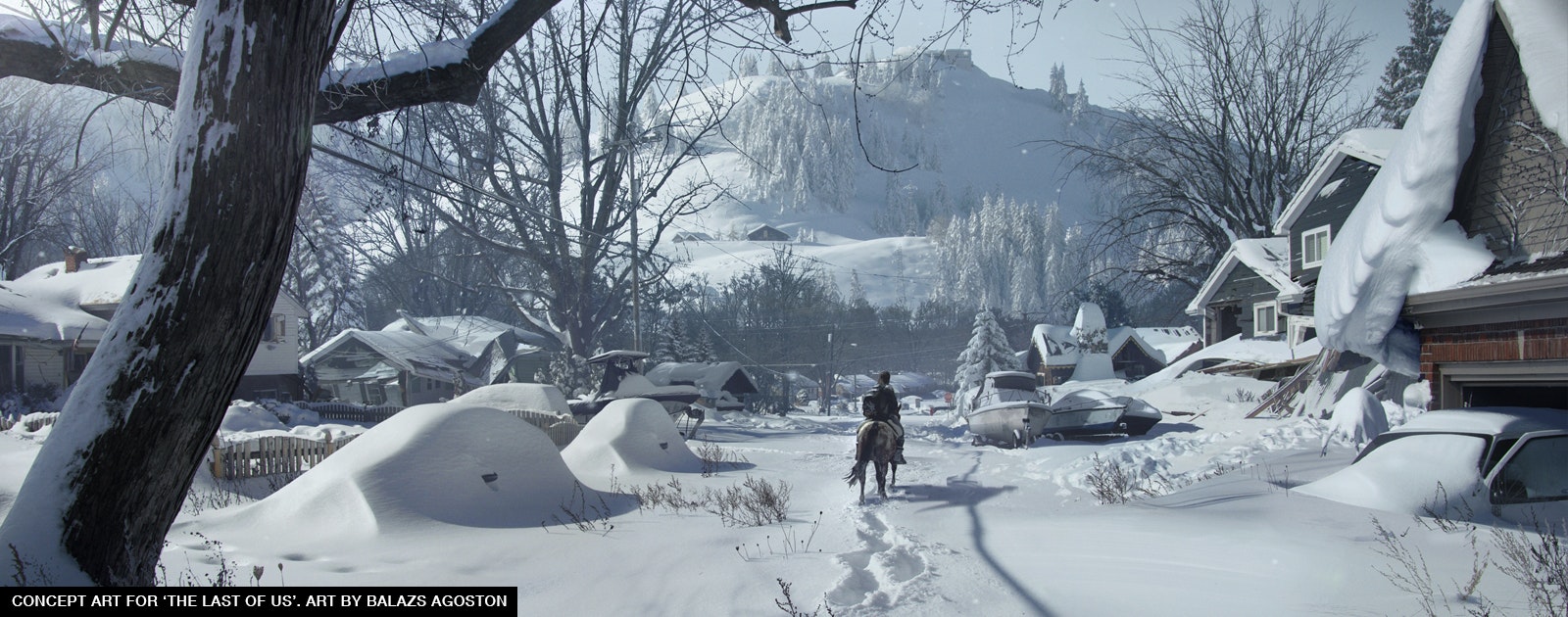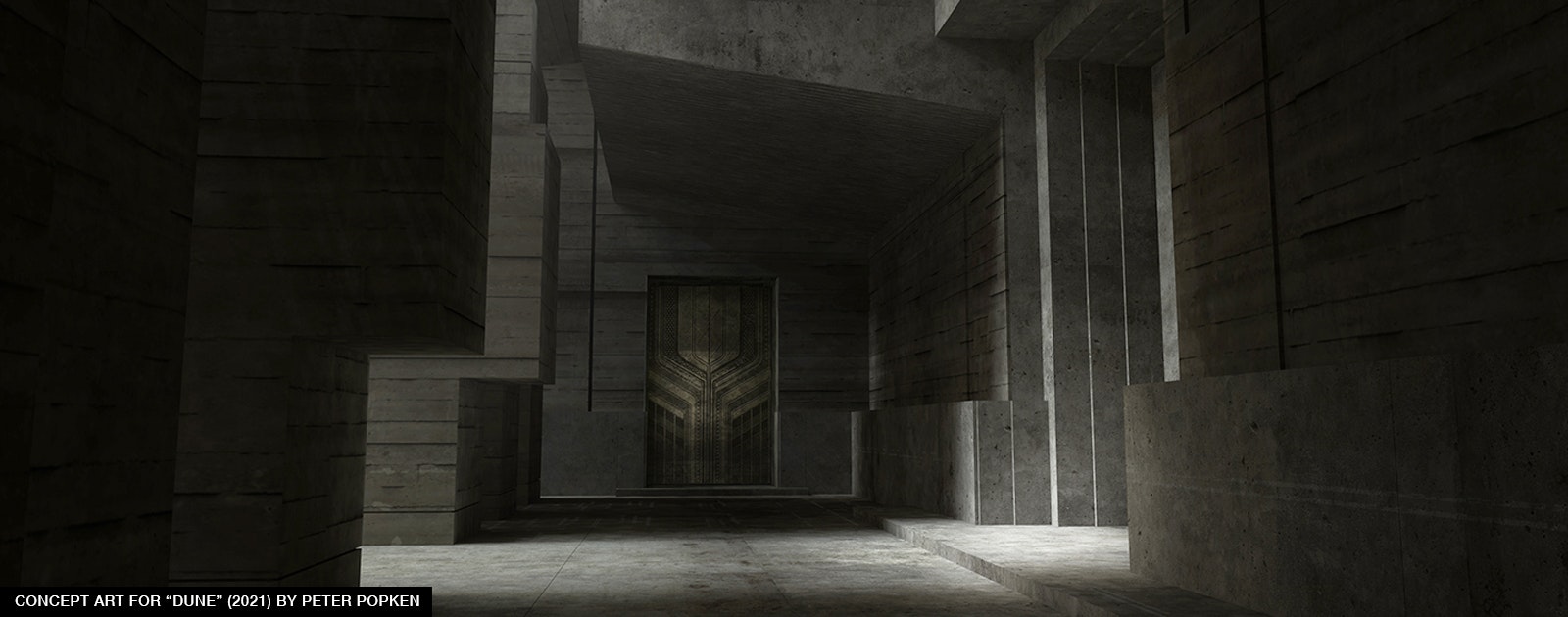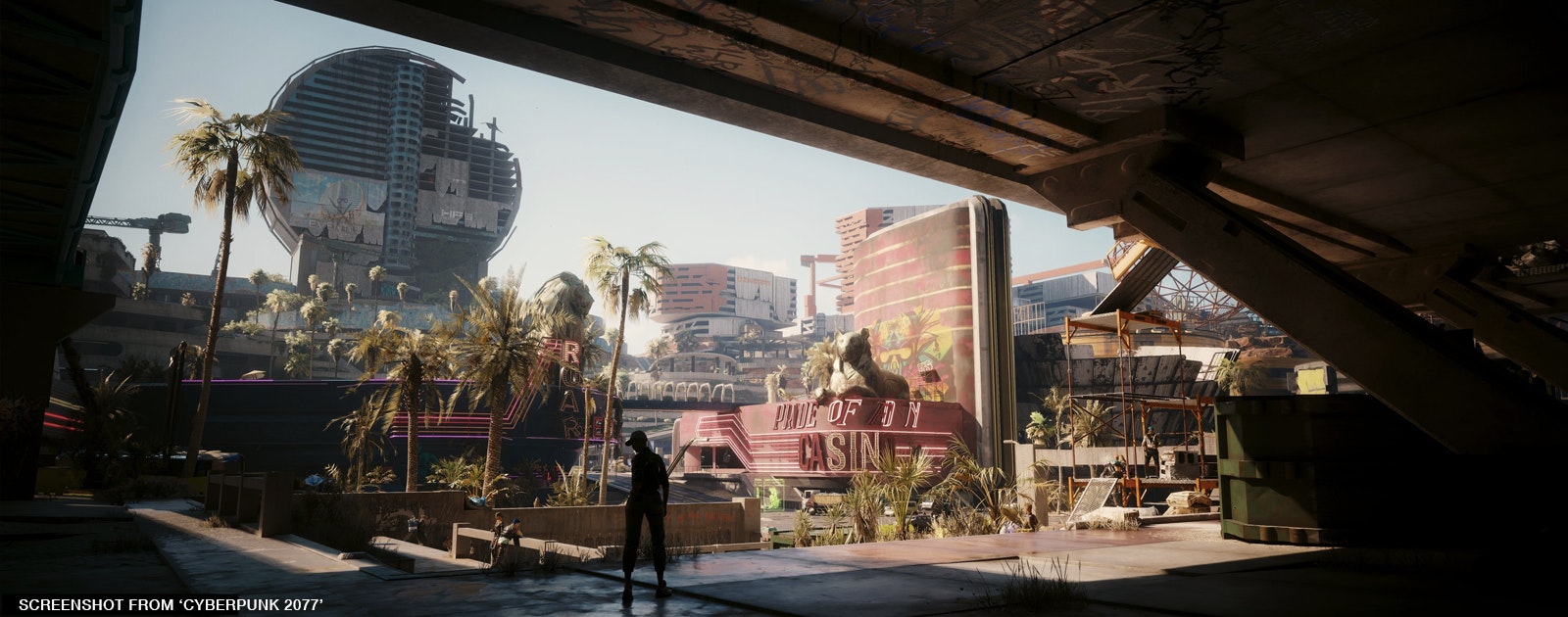Let's Talk About The Backstory II.


In the first part of the backstory (which you can read here), I talked about the top layers of invisible history - past function, people, and technology levels - , and in the second part, let’s dive deeper and add additional layers that will make the world of our IP more believable and alive.
Do you know the story of the jar filled with rocks, pebbles and sand that represents your life? It also represents your IP.
The larger stones and pebbles represent the past and present functions of the buildings, the people and their culture that we see at first glance - the atmosphere of the IP. But if you only put stones in the jar, you don't fill the whole area: you’ll need to put the smaller pebbles and sand to complete the picture (and the jar).

4. Natural Forces & Weather

The forces of nature, decay, and overgrowth in The Last of Us shape not only the environment, but the entire atmosphere of the game, turning once welcoming towns into reminders of a civilization long gone.
It's one of the most impressive effects, instantly noticeable and instantly changing the mood of your world.
The influence of weather, decay, overgrowth, elemental damage can give a post-human atmosphere to your IP that doesn't just shape the environment, but also becomes part of the story.
- How has the natural world shaped your environments - floods, droughts, storms, pandemic?
- What climate dominates the region now and how has it shifted over time?
- Has nature reclaimed abandoned spaces, or has the environment been scorched and stripped?
Natural forces, storms, pandemics, overgrowth create visible scars on the surface of the world that will add deeper layers of meaning. These environmental factors and marks will be part of the visual identity of your IP.
5. Conflict, Power Struggles, and Control

In The Hunger Games, the District 12 train station reflects the history of oppression - the overall design language, materials and posters demonstrate the dominance of the Capitol over the residents of the district.
This is a feature of dystopian IPs. Since time immemorial, where there are people, there are power struggles, and this is also true for fictional worlds. Battles, revolutions and quiet repression weave their patterns into the canvas of your story. Think of movies like The Hunger Game, or 1982.
- Was it a place of safety, resistance, or oppression?
- Has this environment witnessed wars, revolutions, or shifts in power?
- What visual remnants of conflict remained: graffiti, barricades, destroyed monuments?
Conflict leaves behind physical marks that instantly tells your audience who fought for power, who lost, and who is still in the game.
6. Resource Flow: Abundance vs. Scarcity

The Arrakeen Palace in Dune (2021) is a perfect example of how limited resources determine not only the survival chances, but architecture itself. Built to withstand the brutal desert heat and sandstorms of Arrakis, every part of the palace (from its thick stone walls to its minimalist, fortress-like design) presents a world where conserving resources is essential to survival.
Wealth and deprivation shape the environment differently than other factors. A well-fed city shines; a starving city fragments and decays. Determining what resources our world has (or lacks) helps shaping the design, materials, and architecture of our environment, and also for shaping society. Lack of basic necessities can lead to inequality, rebellion, or collapse (which can even be the beginning of a good and exciting story).
- Did the inhabitants of this world thrive on excess or survive on scraps?
- Was this place a center of wealth or a place of desperate depredation?
Resource availability shapes societies from their technology and architecture to their conflicts and alliances and will ripple through the economics, politics, and culture of your IP’s world.
7. Geography & Setting

In Cyberpunk 2077, Night City's environment, geography and setting demonstrate that where your world is built is as important as what happens within it.
The location of your environment (even in a fictional or futuristic world) will determine how it looks, feels, and functions.
In a cyberpunk megacity like Night City (Cyberpunk 2077), the choice of geography determines a lot of things. You'll need to make tons of research about the potential foliage (type and density), terrains, materials used - as these are likely to be influenced by the environment's past and possible climate changes and their consequences.
- Is the environment located in a metropolis, isolated wasteland, flooded ruins, underground sectors, or orbiting colonies?
- What kind of biome or artificial landscape surrounds it? Desert outskirts, coastal docks, vertical slums, tech-saturated downtowns?
- Are there environmental or urban challenges that shaped its layout like overcrowding, acid rain, flooding, seismic activity, or resource shortages?
Final Thoughts
Learning to see and recognize the layers in the world will not only make you a better storyteller, it will also change the way you think.
Whether you're building a massive, complex universe or just designing a one-off
location, always start with the story you want to tell and work
backwards from there. When
all your design decisions are based on narrative logic, you end up
with not just an environment, but with the vehicle for a story.
Let's collaborate!
Or share your thoughts in email with me, I'm always open to chat.
